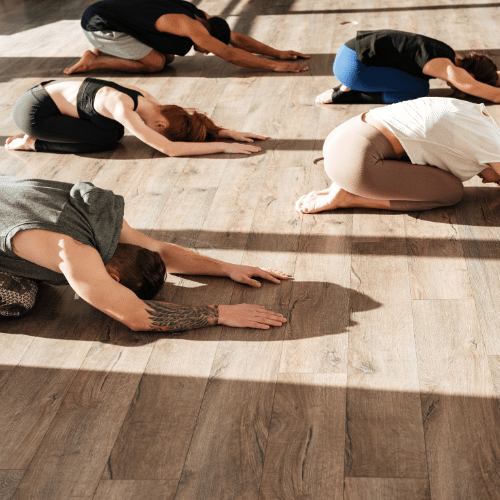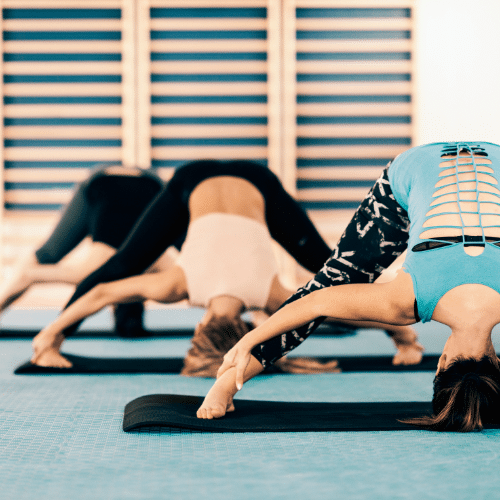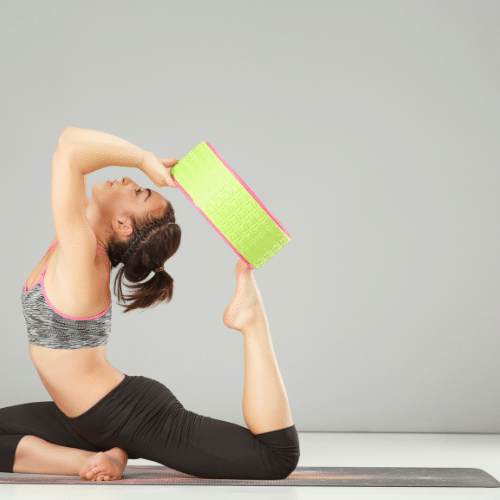According to the American Psychiatric Association, the average adult is 77% more stressed these days compared to two decades ago. These days, everything from money to living conditions contributes to the agitation people feel daily.
The high stress among people in Roseville and other parts of California isn’t going away. In this part of the state, being on edge is as much a part of human life as work. To help manage their stress, many people develop a yoga Roseville mindfulness practice.
Yoga delivers improved flexibility and mobility. Of course, its best benefit is what it does to calm people down. The reason for yoga’s tranquilizing effect is its co-terminality with one other tried-and-tested practice — meditation.
Meditation goes hand in hand with body yoga in Roseville. Now, before you bring out your meditation mat, be aware that not all meditation is the same.
Some will deliver certain results and carry over to yoga. Others will not — at least not for everyone.
Read on to learn more about the different types of meditation that will bring you back to your center.
What’s Meditation?
At a glance, any activity that a person performs that is relaxing can be meditative. However, if this were true, then partaking of anti-anxiety medications or alcohol would be meditative. Many know this not to be the case.
With this mind, what is meditation?
Rather than trying to come up with a definition, it’s better to think of what makes activities meditative. Any meditative activity requires an individual to, firstly, focus. The focus may be towards anything as long as it is the sole object of the person’s focus. The object of focus can be an image, a person’s breath, or, as in the case of mindfulness meditation, thoughts.
According to Healthline, the act of repetitive and sustained focus gives meditation its calming effects. In addition, numerous studies also show that meditation, particularly mindfulness meditation, improves creativity and problem-solving.
In a nutshell, meditation is any activity that requires a person to focus on an object, the breath, thoughts, and the present moment.
Now that there’s better clarity on what makes an activity meditation, here are some types that will carry over to yoga. The first one is the type most are familiar with — mindfulness meditation.
More on this type of yoga will appear in the next section.
1. Mindfulness Meditation
Mindfulness meditation is popular for two reasons — it’s simple and it’s also effective. Its near-flat learning curve allows people to get into the habit of meditation quickly. Also, for those who practice this form of meditation, the benefits are quickly apparent.
Mindfulness meditation requires a practitioner to (preferably) sit motionless with eyes shut. The objects of focus in mindfulness meditation are the breath and thoughts. The breath needs to be natural but deep so that being in a seated position remains comfortable.
The real benefits of mindfulness meditation come from focusing on thoughts. There’s a prevailing misconception that meditation involves “clearing the mind.” While it’s ideal not to be thinking of anything during meditation, this is not realistic.
Mindfulness meditation allows a practitioner to have deep, intentional thoughts. Masters of this form of meditation encourage having thoughts. How a practitioner handles these thoughts is what’s crucial.
During mindfulness meditation, a person needs to be aware of their thoughts, allow them to occur, and allow them to dissipate. There should be no attempt to control any thoughts.
The benefit that results from this practice is an awareness of one’s thought patterns. Over time, the practitioner also becomes fully aware of the present moment, leading to a more calm and positive attitude.
2. Focused Meditation
Focused meditation is another type of meditation that has grown popular over the years. Like mindfulness meditation, it requires practitioners to focus. The only difference is that the object of focus becomes either the breath or an external object.
During focused meditation, practitioners need to be in a comfortable position. Whilst in a comfortable position, practitioners need to engage in repetitive activities or focus on repetitive stimuli like gong sounds.
Examples of repetitive activities include the following:
- Chanting
- Counting beads
- Staring at a candle flame’s flicker
- Staring at the moon or stars
The benefits associated with focused meditation are numerous. According to Healthline, the most salient is sharper focus and improved attention span.
3. Movement Meditation
For many, meditation involves being motionless. However, there are some forms of meditation that require practitioners to move. One example is yoga which is a type of moving meditation.
Movement meditation is exactly what it sounds like — meditating while moving. Of course, with the desired result of the meditation, the movements will usually be slow, rhythmic, and even repetitive.
Many activities can be conducive to movement meditation. What’s important is being focused on the activity or movements. Some examples of movements are walking leisurely, Tai Chi, and even gardening. In a nutshell, it can be any non-strenuous movement that allows a person to focus on the movement.
The benefits of movement meditation include reduced stress. Also, participants find that they’re able to be fully present and less anxious about the future.
4. Vipassana Meditation
Vipassana meditation originated in India sometime in the late 60s. It began as a way for students of the discipline to reconnect with their minds and bodies. To this very day, the connection between the mind and the body remains the guiding principle for Vipassana meditation.
Vipassana meditation resembles mindfulness meditation in nearly every way. The main difference lies in what a person needs to pay attention to during meditation. Whilst in a comfortable position, practitioners of Vipassana meditation need to pay attention to what they’re feeling at the moment.
In addition to being aware of their sensations, practitioners need to meet these with no judgment. This allows them to confront their sensations and emotions objectively, which is one of the benefits of Vipassana meditation. Other benefits include:
- Increased awareness
- Calmness
- Broader perspective
- Better hip mobility due to sitting cross-legged
5. Yoga Meditation
Yoga meditation combines the controlled posture and breathing of yoga and the focusing power of meditation. Yoga meditation requires practitioners to focus on their breath and posture as they hold and change positions.
Each position progresses in varying degrees of difficulty, requiring more concentration and balance. Holding one or two positions will require a person to concentrate and breathe in a controlled manner.
For its level of difficulty, yoga meditation provides benefits that go beyond stress relief and calmness. Due to holding static positions, practitioners can improve their physical strength. In addition, advanced practitioners can also experience the benefits of improved flexibility and mobility from many positions.
Whatever Kind of Meditation You’re Into, Do It With Yoga at Zuda
There are many other types of meditation aside from the ones in this article. Regardless of the type, each one requires practitioners to focus. As a result, meditation elicits benefits that are both physical and mental.
The body and the mind are inseparable. This is why we at Zuda Yoga believe in the power of meditation and yoga together. If you’re looking for yoga in Roseville to improve your joint mobility and your state of Zen, visit us at Zuda Yoga.









